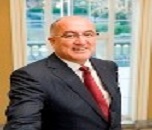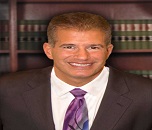Sessions and Tracks
Track 1: Stroke
A stroke takes place when a blood vessel within the mind ruptures and bleeds, or when there's a blockage within the blood supply to the mind. The rupture or blockage prevents blood and oxygen from achieving the mind's tissues. Some stroke chance elements, which includes gender, age and own family records, cannot be managed. People fifty five or older have a better risk of stroke than more youthful human beings. Men have a better threat of stroke than ladies. Lifestyle elements that increase your risk of stroke include excessive blood stress, smoking, diabetes, excessive blood levels of cholesterol, heavy drinking, high salt and high fats diet and shortage of workout. Sudden numbness or weakness within the face, arm, or leg, particularly on one aspect of the frame. Sudden confusion, problem speakme, or problem information speech. Sudden problem seeing in one or both eyes. Sudden trouble strolling, dizziness, loss of stability, or loss of coordination. High blood stress is the leading cause of stroke and is the principle reason for improved threat of stroke among people with diabetes
Track 2: Stroke Nursing
Your preliminary assessment of a patient with a suspected stroke need to include airway, breathing, and move, observed by using neurologic evaluation using both the NIHSS or the mNIHSS, according to facility policy. The preliminary nursing evaluation of the patient with stroke after admission to the clinic should include comparing the affected person's vital signs and symptoms, specially oxygen saturation, BP, and temperature, in addition to measuring blood glucose and appearing a bedside dysphagia display/assessment.
The major nursing desires for the affected person and family might also consist of:
-
Improve mobility.
-
Avoidance of shoulder pain.
-
Achievement of self-care.
-
Relief of sensory and perceptual deprivation.
-
Prevention of aspiration.
-
Continence of bowel and bladder.
-
Improved idea approaches.
-
Achieving a form of communique.
-
Maintaining pores and skin integrity.
-
Restore family functioning.
-
Improve sexual characteristic.
-
Absence of headaches.
Track 3: Stroke Rehabilitation
Stroke rehabilitation is a program of various treatment plans designed to help you relearn competencies misplaced after a stroke. Depending at the parts of your mind tormented by the stroke, rehabilitation can assist with motion, speech, power and each day residing capabilities. Stroke rehabilitation depends on the severity of your stroke and associated headaches. Some stroke survivors recover speedy. But most want some form of lengthy-time period stroke rehabilitation. Rehabilitative remedy commonly begins in the acute-care health facility once the circumstance has stabilized, often within forty eight hours after the stroke. The first steps frequently involve selling unbiased motion to overcome any paralysis or weakness. For most stroke sufferers, rehabilitation specially entails physical remedy. The aim of bodily therapy is to have the stroke affected person relearn simple motor activities such as walking, sitting, status, mendacity down, and the manner of switching from one type of movement to another.
Track 4: Brain Hemorrhage
Brain bleeds (Hemorrhage) – bleeding between the mind tissue and skull or in the mind tissue itself – can cause mind harm and be existence-threatening. Some signs include headache; nausea and vomiting; or sudden tingling, weak point, numbness or paralysis of face, arm or leg. Around 66% of humans will experience neurological issues, which includes problems with speech or memory. There are three important varieties of bleeding: arterial, venous, and capillary bleeding. Brain Hemorrhage may occur due to injuries, along with cuts or puncture wounds, bone fracture or traumatic mind injury, Violence, such as a gunshot or knife wound, or bodily abuse, Viruses that assault the blood vessels.
Bleeding may anywhere among these 3 membranes (dura mater, arachnoid, and pia mater)
-
Epidural bleed (hemorrhage): This bleed takes place among the cranium bone and the outermost membrane layer, the dura mater.
-
Subdural bleed (hemorrhage): This bleed takes place among the dura mater and the arachnoid membrane.
-
Subarachnoid bleed (hemorrhage): This bleed happens among the arachnoid membrane and the pia mater.
Track 5: Ischemic Stroke
Ischemic stroke is characterized through the sudden loss of blood movement to an area of the mind, resulting in a corresponding loss of neurologic characteristic. Within mins, mind cells start to die. Fatty deposits lining the vessel walls, called atherosclerosis, are the primary motive for ischemic stroke. Blood clots can be due to an abnormal heartbeat inclusive of arrhythmia, troubles with the coronary heart valve, contamination of the heart muscle, hardening of the arteries, and blood-clotting issues. The three types of Ischemic Stroke are Hemorrhagic Stroke, Transient Ischemic Attack (Mini-Stroke), Brain Stem Stroke. It is important to treat strokes as early as possible. Blood thinners may be used to stop a stroke while it is happening by quickly dissolving the blood clot.
Track 6: Cryptogenic Stroke
Cryptogenic, or unexplained, stroke is found in about 30%–forty% of ischemic stroke patients. Cryptogenic stroke is a type of stroke without a acknowledged reason, with a terrible screening for a particular reason, together with cardioembolism, atherothrombosis, arterial dissection, and lacunar stroke. The most common vascular reasons of CS are complicated aortic plaques and Fabry's disorder. These strokes show up while an artery in your brain becomes blocked, generally by a blood clot. About 25% of ischemic strokes are cryptogenic, that means that checks do no longer show a definitive cause. A thorough evaluation requires mind imaging, with computed tomography (CT) or magnetic resonance imaging (MRI), neurovascular imaging with CT angiography (CTA), MR angiography (MRA) or cervical carotid duplex and transcranial Doppler, cardiac evaluation with echocardiography. Most patients with cryptogenic stroke are treated with a mixture of antiplatelet therapy and stroke risk issue discount
Track 7: Antiplatelet Therapy
Platelets, small factors that flow into commonly within the bloodstream, assist the frame guard itself towards bleeding and blood loss. They do this by using sticking collectively and supporting within the formation of a clot on the website online of bleeding. Although this technique of creating a blood clot, that's known as thrombosis, is useful in someone with severe bleeding, it may additionally purpose troubles, especially when a blood clot paperwork in the circulate of the coronary heart or mind. Antiplatelets are medicines that forestall cells within the blood (platelets) from sticking collectively and forming a clot. Drugs that intervene with platelet feature may be classified into three categories: Those that prevent cardiovascular ailment (number one prevention), those that deal with an acute disorder, and those that treat a persistent disease (secondary prevention). There are both oral (taken by means of mouth) and intravenous (given thru a vein) capsules that inhibit platelet feature and are used to treat patients with cardiac and cerebrovascular sicknesses. Aspirin is the most not unusual antiplatelet. At a low dose, aspirin reduces inflammation inside the arteries.
Track 8: Heart Failure
Heart failure once in a while referred to as congestive coronary heart failure is an extended-time period situation in which your heart can’t pump blood nicely enough to meet your frame’s needs all the time. The maximum commonplace conditions that may result in heart failure are coronary artery ailment, excessive blood strain and former coronary heart assault. Almost six million Americans have coronary heart failure, and extra than 870,000 humans are identified with coronary heart failure each yr. Heart failure (congestive coronary heart failure) is the main motive of hospitalization in human beings older than sixty five. Some of the headaches from coronary heart failure encompass:
-
Irregular heartbeat.
-
Sudden cardiac arrest.
-
Heart valve problems.
-
A series of fluid to your lungs.
-
Pulmonary high blood pressure.
-
Kidney damage.
-
Liver harm.
-
Malnutrition
Treatment consists of exercising and medicinal drug at first and viable surgical tactics whilst heart failure receives worse.
Track 9: Cardiac Arrest
Cardiac arrest is the surprising loss of blood drift at some point of the frame due to the coronary heart now not being able to pump blood successfully. Sudden cardiac arrest takes place and regularly without caution. A heart assault is whilst blood glide to the heart is blocked, and sudden cardiac arrest is when the coronary heart malfunctions and abruptly stops beating suddenly. A coronary heart assault is a “move” problem and unexpected cardiac arrest is an “electrical” problem. These two awesome heart conditions are connected. Sudden cardiac arrest can arise after a coronary heart attack, or in the course of restoration. Heart attacks growth the danger for sudden cardiac arrest. Most coronary heart attacks do no longer result in surprising cardiac arrest. But whilst sudden cardiac arrest happens, heart assault is a common reason. Other coronary heart conditions may disrupt the coronary heart’s rhythm and result in sudden cardiac arrest. These consist of a thickened coronary heart muscle (cardiomyopathy), heart failure, arrhythmias, particularly ventricular fibrillation, and long Q-T syndrome.
Track 10: Stroke Medicine
A stroke happens whilst the blood deliver to the mind is interrupted or whilst there’s bleeding within the mind. Stroke may be cured — however it takes place in stages. First, medical doctors administer unique remedy to restore everyday blood waft within the brain. Then, the patient participates in rehabilitation to cure the secondary results. According to the National Stroke Association, 10 percent of people who've a stroke get better almost absolutely, with 25 percent recovering with minor impairments. Another 40 percentage enjoy moderate to intense impairments that require special care. Effective treatment of stroke can save you lengthy-time period incapacity and keep lives. The particular remedies recommended rely on whether a stroke is caused by: a blood clot blocking off the waft of blood to the mind (ischaemic stroke) bleeding in or around the brain (haemorrhagic stroke) Treatment normally includes taking 1 or extra different medicines, even though some human beings can also need surgical treatment.
Stroke remedy
Clot-breaking capsules. Thrombolytic pills can split blood clots to your mind's arteries, so one can forestall the stroke and decrease harm to the brain. ...
Mechanical thrombectomy.
-
Stents.
-
Surgery.
-
Medications.
-
Coiling.
-
Clamping.
-
Surgery.
Track 11: Anastomotic Steal Phenomena
An anastomosis is a surgical connection between two structures. It usually means a connection that is created between tubular structures, such as blood vessels or loops of intestine. For example, when part of an intestine is surgically removed, the two remaining ends are sewn or stapled together (anastomosed). A procedure to connect healthy sections of tubular structures in the body after the diseased portion has been surgically removed. The term "subclavian steal" refers to a phenomenon of flow reversal in the vertebral artery ipsilateral to a hemodynamically significant stenosis or occlusion of the prevertebral subclavian artery [The subclavian steal phenomenon (SSP) is characterized by retrograde flow within a vertebral artery ipsilateral to an upstream proximal high-grade subclavian artery stenosis or occlusion, stealing blood from the cerebral circulation. Coronary steal is the phenomenon where physiological or pharmacological vasodilation of a myocardial segment's vasculature is associated with “steal” of blood from another myocardial segment, which is already significantly vasodilateddue to the presence of a significant stenosis in a large epicardial artery.
Track 12: Intracerebral Hemorrhage
Intracerebral hemmorrage (ICH) is defined as actue, spontanious non disturbing extravasation of blood into the mind pranchyma which might also expand to the ventricular machine and the sub archaniod area. ICH is responsible for 10-15% of stroke cases in USA and upto 20-30% in Asian populace. World wide incidence is 10-20 instances per 10000 human beings. The occurrence doubles with each decade of life above 45 years. Hemorrhages are greater common in older adults, however they will additionally arise in children. Despite all advances in control and neurocritical care, ICH remains the least treatable shape of stroke and therefore includes the highest hazard of severe morbidity and mortality as compared to ischematic stroke or subarachnoid hemorrhage. ICH is maximum commonly caused by hypertension, arteriovenous malformations, or head trauma. Treatment specializes in stopping the bleeding, eliminating the blood clot (hematoma), and relieving the pressure on the brai
Track 13: Neuropathology
Neuropathology is the examine of sickness of worried device tissue, commonly within the shape of both small surgical biopsies or whole-frame autopsies. Neuropathologists commonly paintings in a branch of anatomic pathology, however paintings intently with the medical disciplines of neurology, and neurosurgery, which regularly depend upon neuropathology for a diagnosis. Neuropathology additionally pertains to forensic pathology due to the fact mind sickness or mind damage may be associated with purpose of death. Neuropathology need to now no longer be pressured with neuropathy, which refers to problems of the nerves themselves (commonly within side the peripheral worried device) in preference to the tissues. In neuropathology, the branches of the specializations of worried device in addition to the tissues come collectively into one discipline of examine. Neuropathological strategies which includes traditional and immunohistochemical staining of paraffin-embedded tissue sections are instrumental for identification and characterization of aberrations of organ structure throughout human inflammatory problems of the imperative worried device (CNS) as of their animal models.
Track 14: Cerebral Venous Thrombosis
Cerebral venous sinus thrombosis (CVST) takes place when a blood clots paperwork inside the mind's venous sinuses. This avoids blood from draining out of the brain. As a result, blood cells may wreck and leak blood into the mind tissues, forming a hemorrhage CVST is a unprecedented form of stroke. It affects approximately five human beings in 1 million every 12 months. The danger for this type of stroke in newborns is finest throughout the first month. Overall, approximately three out of 300,000 children and young adults as much as age 18 could have a stroke. CVST is a risky and probably lethal sickness. It can cause various symptoms, from headache to impaired vision to problems speaking to, in extreme instances, coma. Fortunately, treatments are available for CVST, and with early analysis, affected person results have a tendency to be appropriate. Treatment for CVST may additionally encompass measures to reduce intracranial pressure, deal with contamination, if gift, and the usage of anti-epileptics to save you.
Track 15: Ischemic Penumbra
Penumbra is the viable tissue across the irreversibly damaged ischemic core. The penumbral place can also be detected primarily based upon an integration of three factors. These factors consist of: the website of vessel occlusion, the quantity of oligaemia (hypo perfused region surrounding the penumbra, however not prone to infarction at that moment, and the mismatch among this perfusion disorder and the place of the mind already infarcted. The ischemic penumbra was to begin with described by means of Symon, Lassen and co-workers inside the Nineteen Seventies as a place of brain tissue with insufficient blood go with the flow to preserve electric hobby of neurons however ok blood drift to hold the feature of the ion chambers. This region of tissue, receiving enough blood to live to tell the tale. The motive of acute stroke treatment is to salvage penumbral tissue and to enhance brain characteristic. It is typically located round an infarct center which represents the tissue which has already infarcted or goes to infarct irrespective of reperfusion. With using a fixed of rigorous standards, PET scanning has provided proof that, in a fragment of the patients, a penumbra of possible, potentially salvageable neurons exists for at least 7 hours, and probable for so long as 16 hours, after the onset of ischemic stroke.




